BAIT UR ROUF MOSQUE: AN AESTHETIC AND INCLUSIVE SPACE
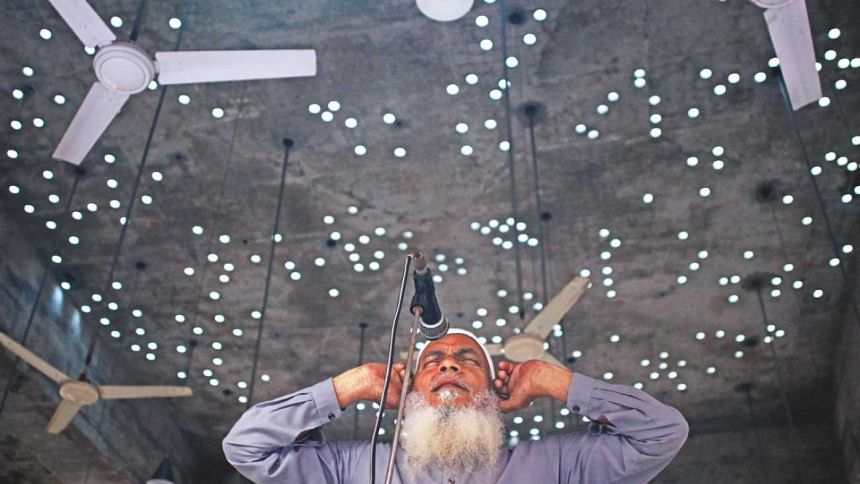
In the increasingly dense neighbourhood of Faidabad, Uttara, a humble brick structure outshines the nearby tall apartment buildings. Bait Ur Rouf mosque on the outskirts of Dhaka city stands out as an architectural masterpiece. Yet its earthy red hue blends into the surrounding landscape.
Just as we were stepping in, a foreigner came to see the mosque. He was a Saudi architect, come from Riyadh to see the mosque. “A lot of foreigners, from 30-35 countries, have come to see our mosque,” says Deen Islam proudly. Islam is the imam of the mosque, and has been since the mosque's completion in 2012.
Locals were also seen to be wandering around the mosque, taking in its unique aspects such as its natural ventilation and lighting. The structure is raised on a plinth, above street level, which prevents the mosque from flooding. It also provides a communal space for men to congregate before and after prayers. The sight of local children playing in and around the mosque is a constant.
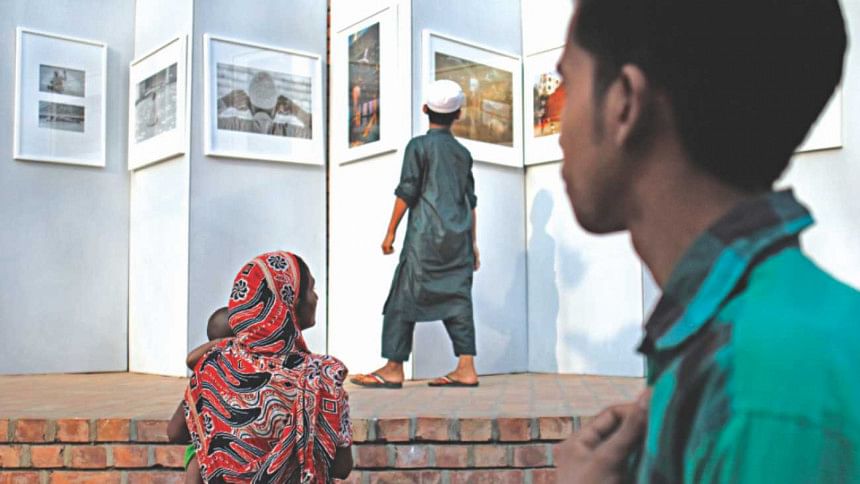
Terracotta bricks, an ubiquitous building material locally, are used on the exterior and interior but left bare, which gives the structure of the mosque character. Marina Tabassum, the architect, explained her use of brick by her strong belief that “architecture should be rooted to its place”. At the 2014 National Architecture Conference in Perth, Tabassum also stated, “You can take a very simple material and by the action of your own creativity and innovation take that to any level you like.”
The mosque is minimalist with almost no furniture. Other features include an opening at the front of the mosque which lets a crescent of light through. Natural light filters into the mosque during the day. It is inspired by Sultanate mosque architecture in Bengal between the 14th–16th centuries.
Bait Ur Rouf skips the now conventional dome, minaret or mihrab. The roof of the mosque is strikingly beautiful, with the fans and incoming rays of sunlight combining to create a lovely interplay of light and shadow. Porous brick walls ensure that the temperature inside the prayer hall is significantly cooler, a welcome relief in the scorching heat of noon.
Mohammad Zahir, the muezzin, is a motor mechanic by trade. A local, he performs the call to prayer at the mosque five times a day voluntarily. The khadem, or caretaker of the mosque, Mohammad Abul Kalam Azad, says that the capacity inside the mosque is 450 people. “On Fridays, however, up to 850-900 worshippers pray in, outside, and even on the top floor of the mosque.”
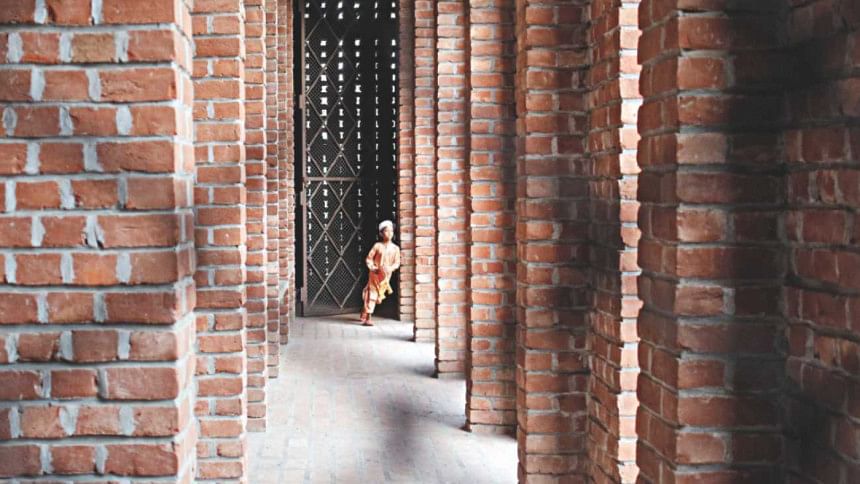
On being asked whether there are spaces for women to pray in the mosque, Islam said that sometimes women come and pray to the side of the prayer hall or in the small space upstairs (earmarked for a library in the future). There is no formal space allotted for them. This is not unusual in mosques in Bangladesh, most of which do not have dedicated sections for females to pray in.
Crucially, however, women who wish to pray inside Bait Ur Rouf are not turned away. We witnessed the imam himself bringing prayer mats for some women who asked if they could pray inside the mosque. Only around 10-12 women on average come to the mosque to pray in a week, says Islam. None, however, pray there regularly and are visitors who do so if it's the time for prayer.
Marina Tabassum won the prestigious Aga Khan Award for Architecture in 2016 for the Bait Ur Rouf mosque. It was, and remains, quite unusual for a female architect to have designed a mosque in a country where women rarely pray in public though there is no shortage of mosques. In fact, as Tabassum points out, “In Bangladesh, mosques are rarely designed by professional architects.”
The tale of the conception of the mosque is as fascinating as the architecture. In 2004-2005, Tabassum's grandmother, Sufia Khatun, donated the land on which the mosque now stands. Being an architect in the family and per her grandmother's wishes following a family tragedy, the task was taken up by Tabassum.
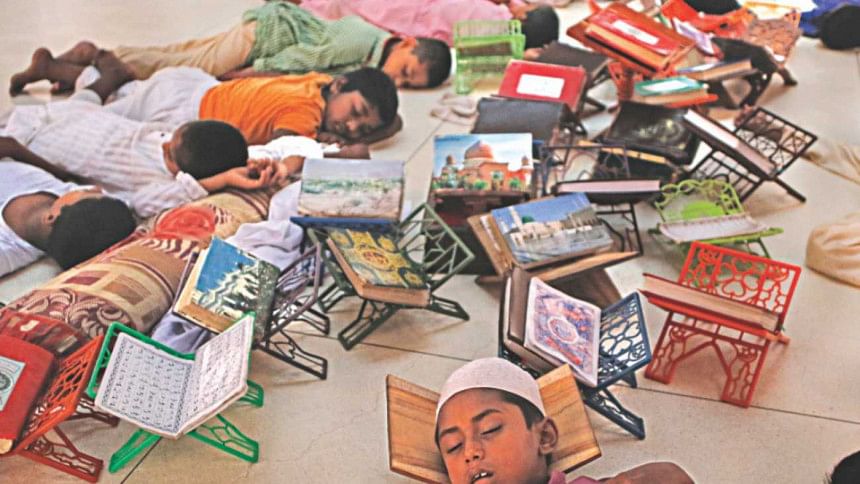
As her grandmother's health gradually declined, Tabassum decided to hold a groundbreaking ceremony in September 2006 though sufficient funds for the building had not been raised yet. Khatun passed away shortly after. Tabassum then laboured alone to bring the mosque to completion, which took a further six years.
The planning to execution process was not smooth. The drawing provided by the surveyor – on which perhaps the most important aspect of designing a mosque depended, the qibla (direction of the Kaaba in Makkah) – was incorrect. Construction of the mosque happened slowly when there was a lack of money. Funding was raised by private donations alone.
Currently, the mosque does not actively take any large donations. According to Islam, small donations by locals and worshippers on Fridays go towards paying for the utility bills incurred, which are modest thanks to the eco-friendly design of the mosque.
Art and Spirituality
Bait Ur Rouf manages to be both an aesthetic and inclusive space. It is as much a place of prayer as it is a community space. Recently, a major event was held on the mosque premises. The photography exhibition 'Embracing the Other' by Shahidul Alam, eminent artist and founder of Drik Picture Library, featured the mosque itself. The use of the mosque as both the subject and venue of the exhibit was only natural, according to Alam. “It was a lived, open space, forgiving, open and receptive, just as the Prophet had intended mosques to be.”
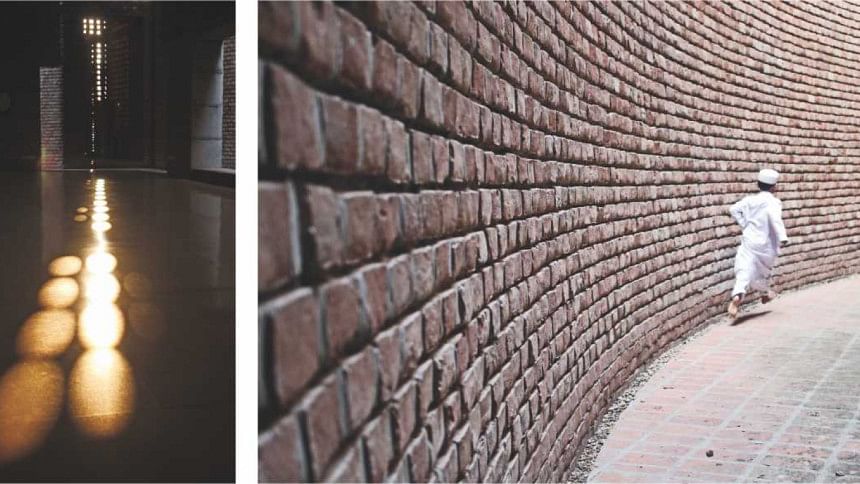
Visitors at the event commented on how open the imam and muezzin were. Energetic children ran around playing with a ball, those more tired were sleeping in the mosque out of the brutal heat. Female visitors, and those of other faiths, wandered in without the convention of covering their heads before stepping inside a mosque. They milled around quietly admiring the architecture while worshippers prayed or sat silently in contemplation.
The photographs were displayed on the outer perimeter of the mosque. Visitors admired the exhibit alongside excited children from the neighbourhood, some of whom were subjects of Alam's photographs. 5-year-old Siam, who studies at the adjacent madrasa, stood in front of his own photograph. When asked if he lives nearby, he shakes his head and gives an address further away. On further being asked whether he came with someone, he proudly says, “I come and go on my own.”
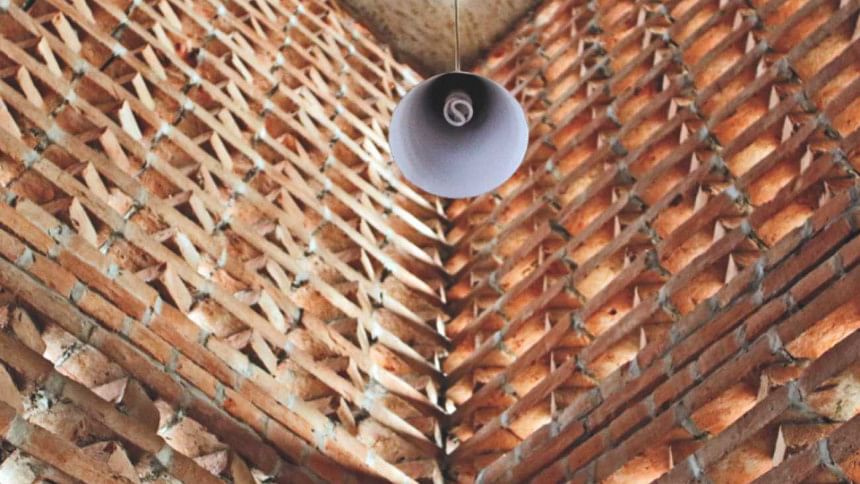
Alam's photographs reveal the mosque in all its architectural brilliance as well as the humble simplicity of moments devotees and visitors experience while in the mosque. This is what Alam found to be different about Bait Ur Rouf. “It is this openness and the ability to reach out to the other, that appears to be missing today, in everyday life and in the mosque itself,” says Alam.
While the geometry of the building recalls the glorious Islamic architecture of the Sultanate period in Bengal, the simplicity of its materials and its structure make it unimposing and inviting. Bait Ur Rouf mosque sets a precedent for the innovative use of local materials and design with respect to the immediate surroundings. Its inclusive culture is refreshing in a time when Islam is in strife, a refuge of spirituality in the chaos of today's world.

 For all latest news, follow The Daily Star's Google News channel.
For all latest news, follow The Daily Star's Google News channel. 



Comments